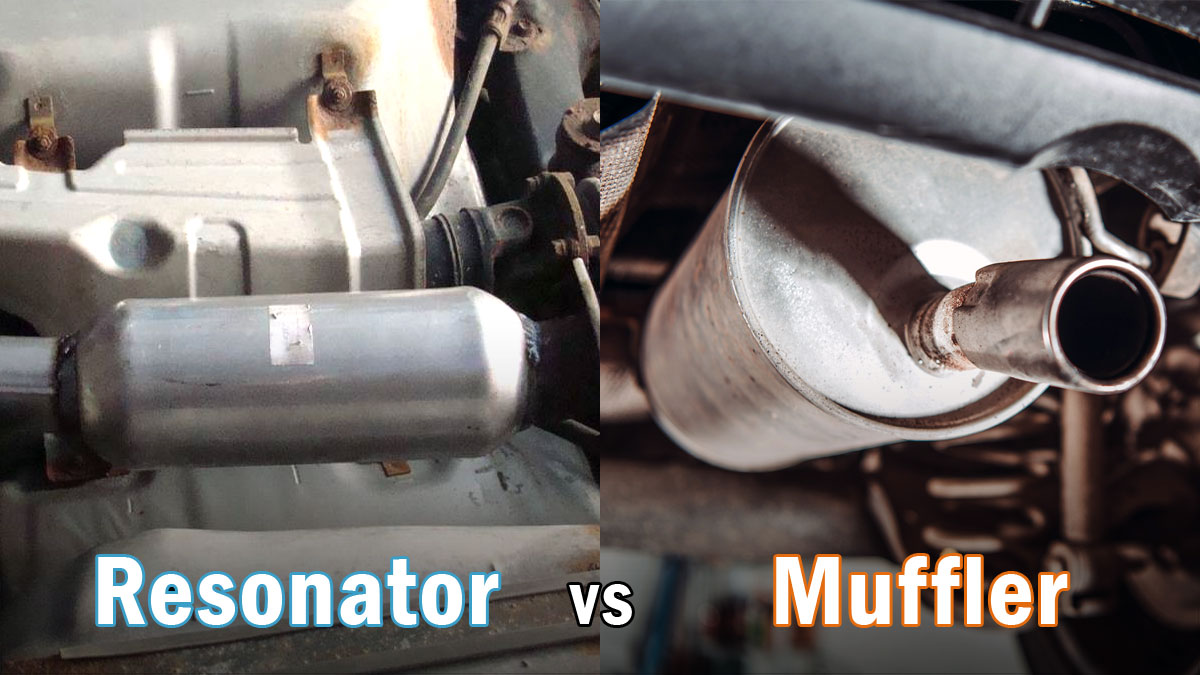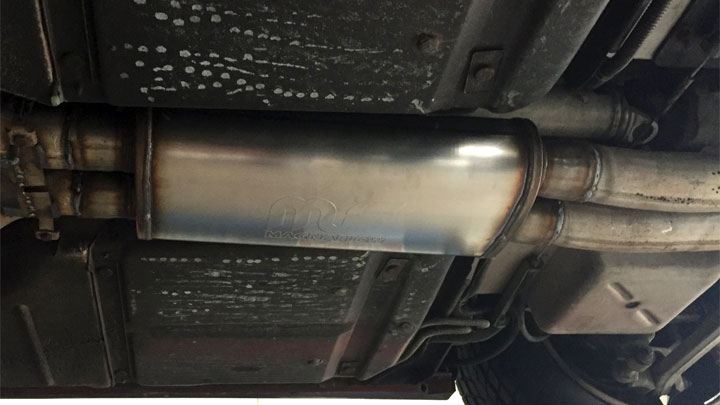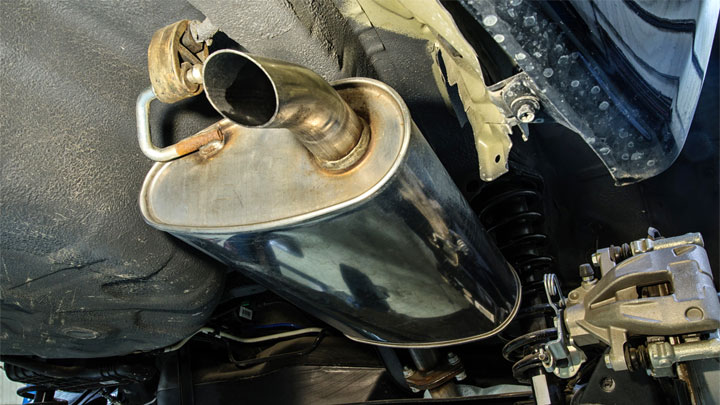Resonator vs Muffler (What’s the Difference?)
The exhaust system does more than direct fumes; it reduces emissions, noise, and improves performance. Two key components are the resonator and muffler, which both aim to lower sound levels.
But despite some confusion, resonators and mufflers are distinct parts with different roles. But what is a resonator? How does a muffler work? Are both components even necessary? We’ll answer those questions and more.

What Is a Resonator?
Your vehicle’s resonator is a component in the exhaust system that adjusts the pitch and frequency of the sound coming from the vehicle’s exhaust system. Often the resonator isn’t much more than a hollow tube that’s slightly larger than the rest of the exhaust pipes.
This slightly larger tube gives the exhaust a bit more space to bounce around before heading into the muffler, and this extra bouncing around can make it a bit easier for the muffler to do its job.
In short, the resonator exists to help the muffler do its job more effectively.

How Does a Resonator Work?
While a resonator changes the sound of the exhaust system so the muffler can better handle it, that doesn’t really explain how it does that. The short answer is that a resonator acts like an echo chamber that the exhaust sounds reverberate off to get the desired frequency.
Engineers work with your vehicle’s exhaust system to develop the perfect echo chamber to modify the sound coming from the exhaust to a pitch the muffler can more easily handle.
It might not seem like a big deal, but the right resonator can significantly lower the sound level coming from your vehicle’s exhaust system.
What Is a Muffler?
The muffler is the last part of your vehicle’s exhaust system and its purpose is to eliminate some of the exhaust noise coming from your vehicle. Unlike the resonator which simply adjusts the sound coming from the exhaust system, the muffler actively eliminates the sound.
You can typically find your vehicle’s muffler at the very end of the exhaust system, and currently it’s illegal to remove the muffler from your vehicle in all 50 states.

How Does a Muffler Work?
While a muffler actively eliminates exhaust noise and lowers the amount of sound coming from your vehicle, it actually does this by combining sound waves. When the sound waves hit each other, they cancel each other’s frequencies out, eliminating much of the noise.
Mufflers are a bit more complex than resonators, but they consist of tubes, channels, and holes that direct gas and exhaust in different directions.
These openings direct the sound towards each other at just the right angles to eliminate much of the noise and significantly quiet the sound of your vehicle’s exhaust.
Does a Vehicle Need Both a Resonator and Muffler?
If you’re looking to alter the sound coming from your vehicle or there’s a hole in the muffler or resonator and causing an exhaust leak, it can be tempting to just cut the component out of your vehicle entirely. But does your vehicle need both the resonator and the muffler?
Technically, a vehicle doesn’t need either a resonator or a muffler to run. These components are all about altering the sound of your vehicle’s emissions, and they really don’t alter performance.
But before you rush off and complete a muffler delete or a resonator delete, know that just because you can that doesn’t mean you should. First, you might not like your vehicle’s sound without the resonator or the muffler.
Second, if you’re looking for a muffler delete, it’s illegal in the United States. While a resonator delete isn’t technically illegal, it can make your vehicle exceed the local noise ordinances and make it illegal that way.
Related: Considering a Straight Pipe Exhaust? (Read This First)
Resonator vs Muffler (Key Differences)
The key difference between a resonator and a muffler is that a resonator modifies the sound coming from the exhaust, while a muffler reduces the sound coming from the exhaust. They work in tandem to reduce the amount of sound coming from the exhaust, but they do it in different ways.
Typically, you can find the resonator in one of two places in a vehicle’s exhaust system. In many setups, the resonator is farther up the exhaust system, but it’s still after the catalytic converter. Meanwhile, the muffler is the last component in the system.
However, often you can find the resonator and the resonator chamber inside the muffler. These systems create a slightly more compact exhaust system, and often they do a better job of modifying and eliminating exhaust sounds.
- P0521 Code (Symptoms, Causes, How to Fix) - Mar 22, 2024
- How to PROPERLY Clean 5 Types of Steering Wheel Materials - Feb 19, 2024
- What Should You Do If Your Check Engine Light Comes On? - Nov 6, 2023
